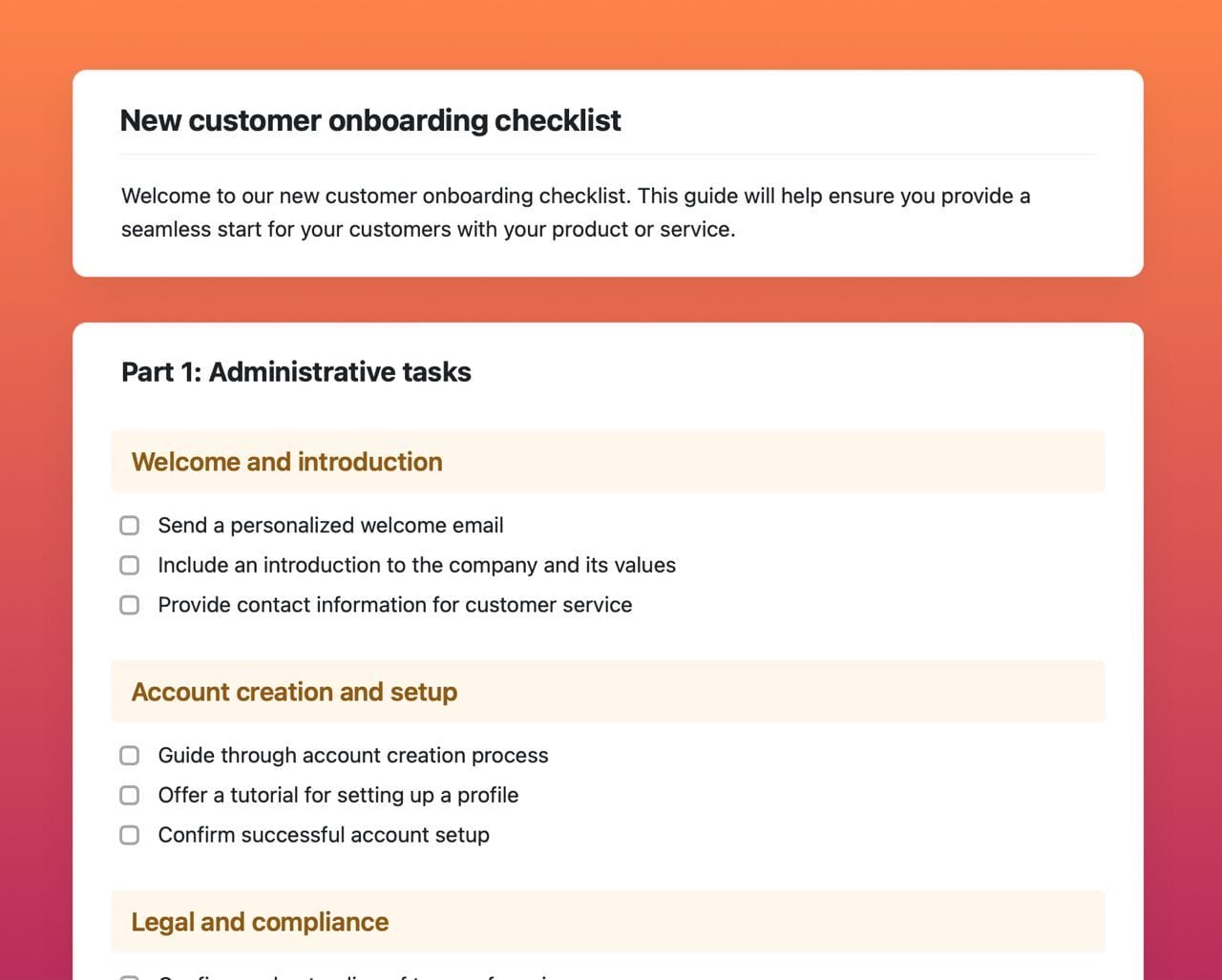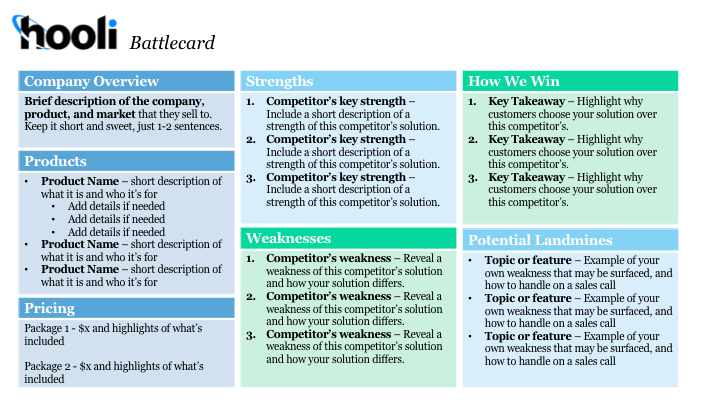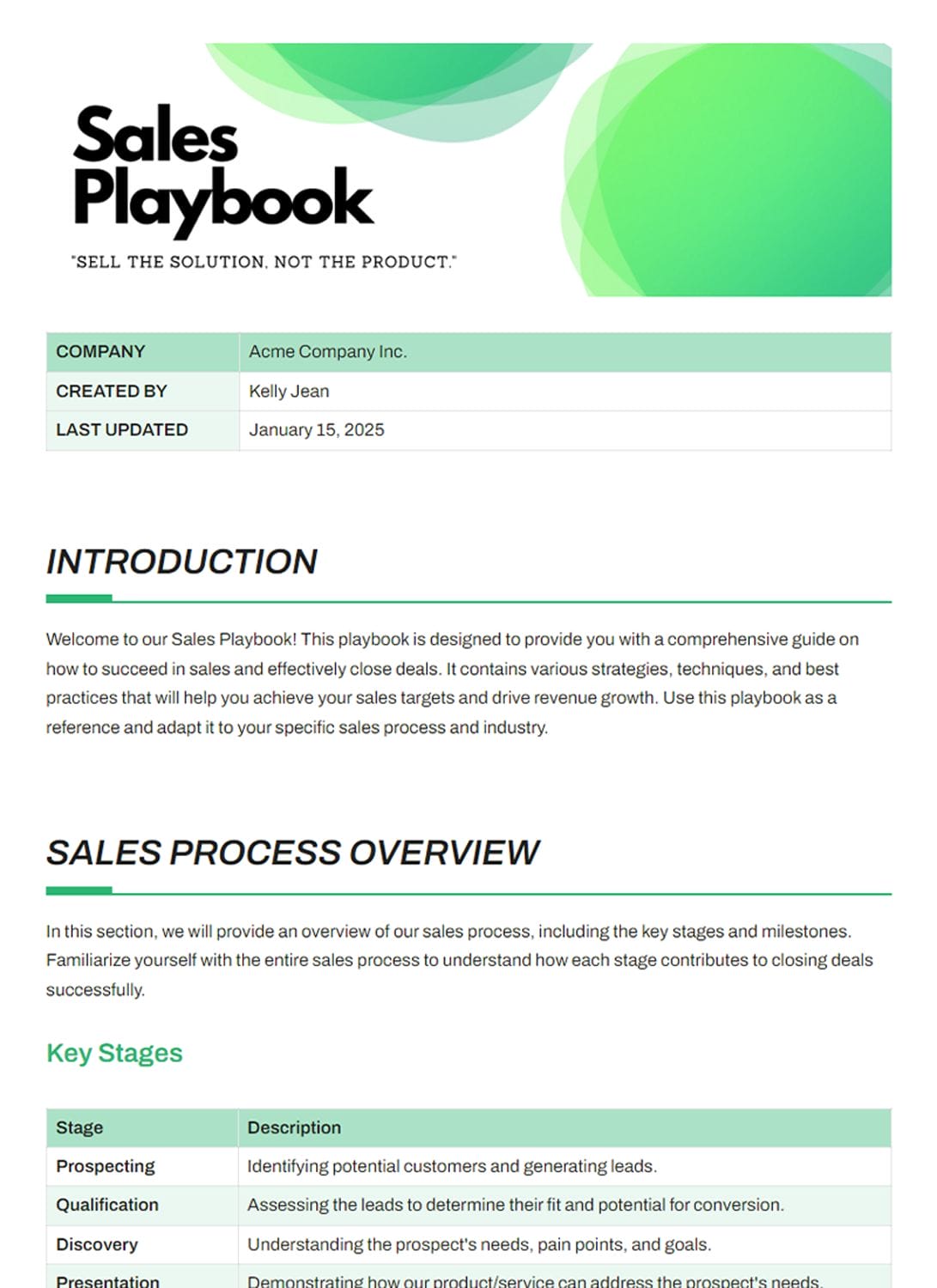As the sales landscape continues to evolve, sales leaders are under pressure to equip their teams with the right tools and resources to engage buyers, shorten sales cycles and win more deals. Sales enablement content plays a critical role in this process, giving sales reps the assets they need to guide conversations and demonstrate product value.
In this guide, we’ll explore what sales enablement content is, share examples of the most impactful assets in 2025, and outline how to build a strategy that empowers your sales team.
What is Sales Enablement Content?
Sales enablement content refers to materials that help sales teams educate buyers, answer objections, and move opportunities through the pipeline more effectively. This includes both external-facing assets, such as case studies and demos, and internal assets like playbooks, sales and email scripts, and competitive battlecards that support rep performance at each stage of the sales cycle.
A balanced approach ensures both customer-facing and internal needs are met, creating a stronger foundation for sales success.
12 Sales Enablement Content and Asset Examples
1. Interactive Sales Decks
Static slideshow presentations are quickly losing their impact and they are a surefire way to quickly lose your prospects attention too. Interactive sales decks bring presentations to life with clickable elements, embedded videos, and real-time data visualizations.
Taking more of an interactive approach to a sales presentation creates a two way conversation rather than a one way presentation, keeping your prospect engaged and making your product or service more memorable.
2. New Customer Onboarding Guides
Sales enablement does not end once the contract is signed. By providing your sales team with onboarding guides, often in the form of a digital handbook or interactive portal, your customers are more likely to see value quickly and reduce the risk of churn.
An effective onboarding guide should outline the key milestones in the first weeks and months of product adoption.

3. ROI Calculators and Value Assessment Tools
One of the most effective ways to prove your solutions value is through ROI calculators or business value assessments. These tools allow reps to input a prospects data and generate a personalized projection of potential savings or revenue gains.
When a prospect can see the financial impact laid out in numbers, it strengthens the business case and accelerates decision-making. These tools give buyers the right information to make informed decisions with confidence.
4. Battlecards
Competitive battlecards are one-page guides that give reps the information they need during high-stakes conversations with prospects. A battlecard typically includes an overview of competitor offerings, a list of your company’s key differentiators, common objections and how to address them, and proof points or examples that back up your claims.
Rather than overwhelming your reps with competitor details, these battlecards provide a clear, structured summary that helps sales reps respond with confidence when competitors come up in discussions. They are especially valuable in a competitive landscape where prospects are evaluating multiple options.

5. Sales Scripts
Scripts and templates give reps a strong starting point for outreach and follow-up. These are typically formatted as step-by-step guides or ready-to-send drafts, ensuring messaging stays consistent while still leaving room for personalization. They are especially helpful for new reps ramping or when targeting new buyer personas.
6. Customer Testimonials
Social proof works, especially in 2025. Customer testimonials provide just that. Short quotes, video clips, and written endorsements from satisfied clients can be shared in email outreach, presentations, and on your website. When testimonials come from companies similar to your prospects industry or company size, they can be even more impactful.
7. Product Demos
Buyers want to see how your product works, not just hear about it. Interactive demo calls or recorded walkthroughs give prospects a hands-on view of your solution’s value.
By tailoring demos to the prospect’s use case, sales teams can showcase the features and workflows most relevant to their needs and provide the clarity buyers look for when making purchasing decisions.
8. Sales Playbooks
Playbooks provide reps with a structured guide for selling the product or service. A well-structured sales playbook includes things like discovery questions, buyer personas, objection handling techniques, and step-by-step guidance for each stage of the customer journey. Think of it as a helpful cheat sheet that keeps reps aligned and consistent.
This resource is particularly effective when onboarding new reps quickly and ensuring a consistent approach across the team.

9. Case Studies
Case studies are one of the most powerful tools in a sales team’s arsenal. A case study should highlight real-world success stories from your customers and show prospects the tangible results your solution delivers.
Case studies should outline the clients challenges, the solution you provided to address customer pain points, and the measurable outcomes. This format makes it easy for buyers to visualize success in their own organizations.

10. Whitepapers
Whitepapers provide an in-depth look at current industry trends or problems, supported by data and expert insights. Whitepapers appeal to senior decision-makers who rely on evidence to guide their strategy and decisions, also serving as a standalone resource that buyers can reference when discussing strategy with stakeholders.
A strong whitepaper can position your company as a trusted advisor while giving sales reps credible sales materials to share during early conversations.
11. Training Videos & Microlearning
Short, focused sales training videos can help your sales reps learn and retain key information quickly. Microlearning modules can cover product updates, new messaging, or selling techniques in bite-sized lessons that fit into a busy day. These assets make it easier to keep teams aligned and up to date without pulling them out of the field for long training sessions.
12. Industry Specific Use Cases
Buyers respond to content that feels tailored to their world. Industry use cases show how your solution fits into the unique workflows, regulations, or common challenges within that sector.
For example, a healthcare-focused use case might highlight compliance and data security, while a manufacturing use case could emphasize efficiency and scalability. Buyers expect a personalized experience.
How to Develop a Sales Enablement Content Strategy
An effective strategy aligns your sales enablement assets with your sales process. Partner with your sales and marketing teams and revenue leaders to identify where prospects stall in the funnel and create resources that:
- Address pain points at each stage
- Support multiple buyer personas
- Can be quickly customized
- Reinforce measurable business value
Ensure you regularly audit your content library to ensure accuracy and relevance as buyer needs and market conditions evolve.
How to Empower Sales Team with Sales Enablement Content
You have the content. How do you empower your team to actually use it? This is a common problem that many B2B organizations face. Beyond creating impactful sales enablement content, you need a plan for enabling the modern sales team to adopt them into their daily workflow.
Here are a few ways to make sure your sales professionals get the most value from the content you provide:
- Centralize sales assets in a single, easily searchable platform or sales content management system. Organizations are 80% more likely to have higher win rates if sales enablement content lives in a unified platform, giving reps easy access to the latest information when they need it most.
- Provide sales training on when and how to use content effectively.
- Share real world examples of sales enablement content driving results.
- Collect feedback from your reps, sales enablement leaders, and customer success teams to refine and improve resources.
Driving Sales Results Through Enablement
From detailed case studies to small workflow enhancements like click-to-dial, the goal of sales enablement is to remove friction from your sales process and support reps at every stage of the cycle. With the right mix of assets and a clear plan for using them, you can create an environment where your sales team is focused on building long-term relationships and closing business.
Recent Peak Sales Resources to Explore
Enterprise Sales Guide: Strategies, Challenges, and Best Practices – A comprehensive look at enterprise sales, including how to navigate long sales cycles, manage multiple stakeholders, and close high-value deals.
Sales Training Resources: A Comprehensive Guide for Sales Managers – Explore curated resources, tools, and methods to strengthen your team’s sales performance and coaching effectiveness.
Sales Psychology Books: 12 Must-Reads for Sales Leaders and Reps – Discover top books on sales psychology to improve influence, persuasion, and resilience in the sales process.
B2B Sales Automation: How It Works and Why It Matters – Learn how automation can streamline B2B sales, save time, and boost efficiency across your pipeline.
